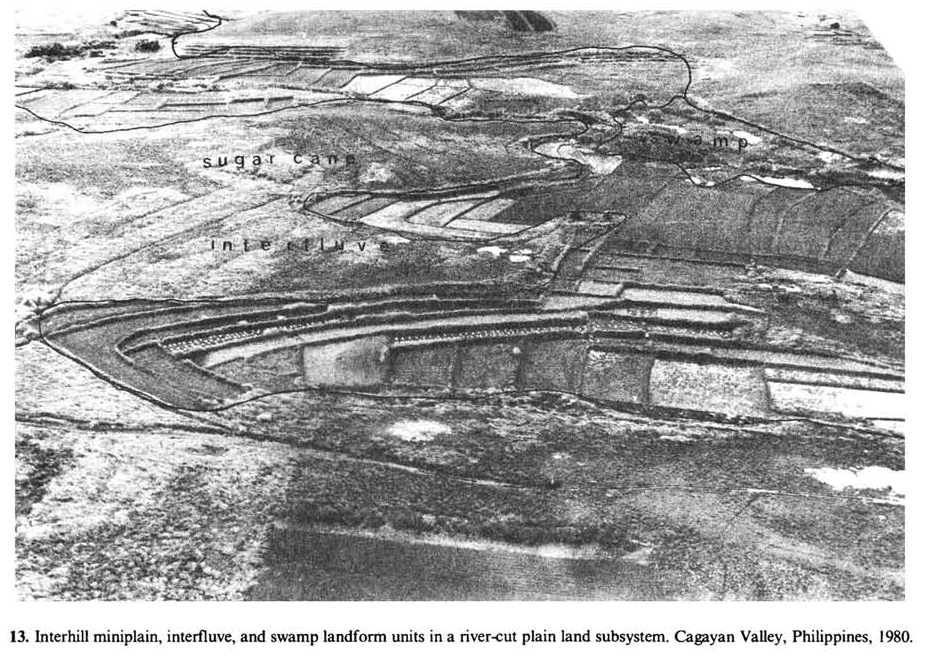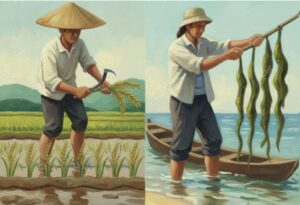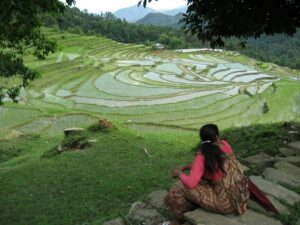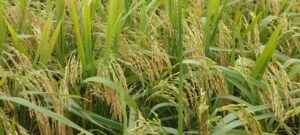The 10 years of intensive rice research that followed the release of IR8 pointed to those with irrigation—only one in four rice farmers—as the main beneficiaries of the new rice technology. What about the other three? The technology that allows farmers to produce two or three crops where one was grown before, and do it without irrigation, has had dramatic effects on the incomes of many Asian farmers. In collaboration with national scientists, such intensification of rice cropping is being widely studied throughout Asia through the Asian Cropping Systems Network. These developments of improved varieties for nonirrigated farms and of methods to intensify crop production in rainfed areas represent real achievements that have already contributed significantly to a better life for many farmers among “the other three.” “What about the other three?”
“What about the other three?”
That was the question in our Research Highlights for 1975. We asked the question because a look at the 10 years of intensive rice research that had followed the release of IR8 pointed to those with irrigation—only one in four rice farmers—as the main beneficiaries of the new rice technology.
 Even though “the other three” with no irrigation had not been completely shut out (the fact is they benefited from a spillover of technology that was workable in rainfed fields), IRRI started to focus its research in 1975 more on problems of the rainfed rice farmer: his rain-dependent less-certain water supply, and poorer soils. Because the risk of crop failure is higher for the rainfed farmer, he has less easy access to credit and the inputs needed to increase rice production.
Even though “the other three” with no irrigation had not been completely shut out (the fact is they benefited from a spillover of technology that was workable in rainfed fields), IRRI started to focus its research in 1975 more on problems of the rainfed rice farmer: his rain-dependent less-certain water supply, and poorer soils. Because the risk of crop failure is higher for the rainfed farmer, he has less easy access to credit and the inputs needed to increase rice production.
What have we achieved for him in the last 5 years?
It is clear, most of all to the scientist, that there can be no yearly “breakthroughs” in rice research. There have been and there will continue to be, however, outstanding new rices released to farmers, some of which allow the disadvantaged rainfed farmer to double, even triple, his rice production per hectare.
Among the varieties developed since 1975, which help the rainfed farmer to cope better with his adverse environment, we can point to:
- IR36, the rice now most widely grown by the Philippine rice farmers, most of whom do not enjoy assured irrigation. IR36 (IR2071-625-1) was named and released by the Philippine Seed Board in 1976. Its early maturity and multiple pest resistance made it an easy favorite of farmers in both irrigated and rainfed areas. To the rainfed farmers IR36 brought the chance to grow a crop in the short period when good rains were certain. If the rains failed for short periods, IR36 could stand moisture stress and then bounce back when rains returned. IR36—with its good harvests from both irrigated and rainfed fields—was a mainstay in putting Philippine rice production at the point of exportable surplus in 1979, and enabling it to continue exporting subsequently.
- IR42, named in the Philippines in 1977, has been outstanding on farms with adverse soils. IR42 (IR2071-586-5-6-3) gives high yields in fields with low nitrogen fertility, has moderate tolerance for zinc and phosphorus deficiencies, and resists most of the major rice pests. Many farmers among “the other three” of 1975 got in IR42 a rice that could double their yields. One IRRI soil scientist called IR42 “the answer to the poor rice farmer’s prayers.”
- IR52, named in 1980 in the Philippines, has good drought resistance and all the other desirable characteristics of the modern IR varieties. IR52 (IR5853-118-5) was first reported in Research Highlights for 1976 for its “excellent vegetative vigor”; later (in 1977) as “drought-tolerant” with potential for rainfed and irrigated” areas, and (in 1979) for “consistently high resistance to drought” over 3 years of tests.
- RD17 and RD19, released in 1979 by Thailand’s Department of Agriculture for farmers in areas with medium-deep water (0.5-1 m depth). These first high yielding modern varieties developed especially for flood-prone areas were the product of a Thailand-IRRI Collaborative Deepwater Rice Project. Their full impact is yet to be felt, but there are indications elsewhere in this report of their potential—they were the only rices to survive in a Philippine area subjected to deep flooding in 1980 and yields of RD19 were exceptionally high in deepwater fertilizer trials at IRRI.
- Varieties and lines with drought tolerance and good yield in dryland fields. IR43 yielded 4.6 t/ha in a Filipino dryland farmer’s field during the 1980 wet season; IR5931-110-1 had yields of 3.9 t/ha in the same field. Both rices held high ratings in 10 trials in 5 countries for the 1980 International Upland Rice Yield Nursery of the International Rice Testing Program. A sister line to IR43 was released as IR 1529 in several African and Latin American countries.
- IR cold-tolerant lines with yields higher than 6 t/ha. IR 15889-32-1 yielded 7.9 t/ha in Korean cold tolerance tests. Several IR9202 lines had yields in the 5-7 t/ha range in cold areas of Korea and the Philippines.
- Several with tolerance for adverse soil conditions—salinity, alkalinity, iron toxicity, and boron, phosphorus, and zinc deficiency. A growing list of IR varieties and lines shows these tolerances.
We do not cite the rices we note here as ones that will always give spectacular yields in fields with adverse conditions. Farmers who plant these rices, however, have an assurance of some yield in bad years and of high yield in good years. Contrast that with their previous expectation of crop failure in bad years and only low yields in their better years.
With the development of the new varieties, there has also been substantial progress in developing new cropping practices, and farmers in some rainfed areas now grow two rice crops where before they grew only one. Such farmers are found in areas of the Philippines, Sri Lanka, India, and Indonesia. A dry-seeded first crop gets off to a rapid start with the early rains. Using an early-maturing rice like IR36, a crop is ready for harvest within 4 months and a second crop can be transplanted while there is still plenty of water to complete its growth.
The use of new drought-tolerant varieties helps reduce risks in areas where rainfall is uncertain. In many areas, farmers are getting their second rice crop off the fields in time to grow mungbean or another dryland crop on the residual moisture–three crops a year in a rainfed field!
We believe that it may well be time to start talking about the potential to hit “two out of three” rather than the “three out of four” that are missed by the new rice technology.
The technology that allows farmers to produce two or three crops where one was grown before—and do it without irrigation—has had dramatic effects on the incomes of many Asian farmers. In collaboration with national scientists, such intensification of rice cropping is being widely studied throughout Asia through the Asian Cropping Systems Network.
These developments of improved varieties for nonirrigated farms and of methods to intensify crop production in rainfed areas represent real achievements that have already contributed significantly to a better life for many farmers among “the other three.”
There has also been progress in other research areas that will make an impact on the lives of the less as well as the more advantaged farmers:
- Tissue and cell culture techniques were greatly improved in our laboratories in 1980. These techniques afford the possibility for further rapid advances in the development of varieties with salinity tolerance, disease and insect resistance, and other desirable characteristics. Through embryo culture we can revive irreplaceable stocks that have lost vitality. Continued screening of the world germplasm collection has identified new sources of tolerance for drought, flooding, low and high temperatures, and adverse soil conditions. Use of these materials in breeding programs provide hope for better rice worldwide.
- More efficient ways of using nitrogen fertilizers have been identified. Work on biological fixation, especially on the association of the water fern Azolla with nitrogen-fixing Anabaena, has shown that there is a great potential for increasing rice yields for the small farmer who may not use nitrogen fertilizer, and for saving money for the fertilizer user who buys less to get high yields.






